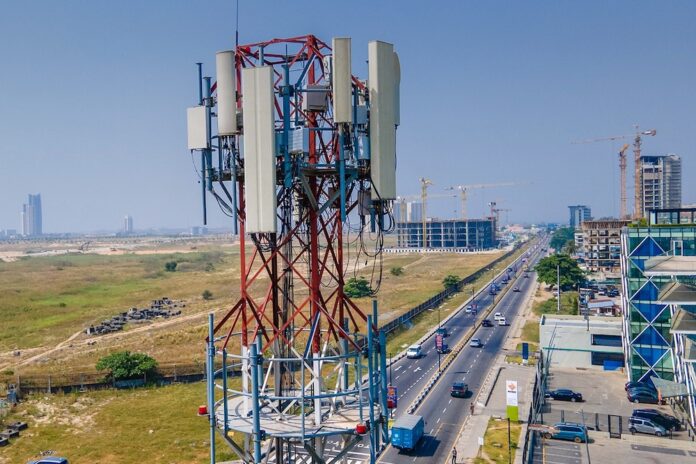The company remains committed to its global portfolio review as 1,465 Rwandan sites go to Paradigm Tower Ventures
IHS Towers announces it is selling 100% of IHS Rwanda including its approximately 1,465 sites to Paradigm Tower Ventures for $274.5 million. The company said the deal, which it argued was at a significant premium compared to its own current valuation multiple is expected to close in the second half of 2025 subject the usual approvals.
The announcement came as the towerco delivered its Q1 results, reporting a 5.2% revenue increase to $439.6 million and a pretty healthy 36.4% rise in adjusted EBITDA to $252.6 million. What was impressive was that it managed to do this despite the depreciation of the Nigerian Naira and the company has eiterated its full-year 2025 outlook.
Sam Darwish, chairman and CEO of IHS Towers, said the company had a strong start to 2025 with growth in revenue, Adjusted EBITDA, and ALFCF, alongside lower capital expenditure, all aligning with expectations. He reaffirmed the full-year 2025 outlook, attributing the positive results to ongoing financial and commercial progress. A focus on financial discipline and selective asset sales has reduced its net leverage ratio at the end of 2024. He also highlighted the $274.5 million sale of IHS’s Rwanda operations as part of broader shareholder value initiatives.
“Looking ahead, we remain excited by the strong growth opportunities across our footprint, underpinned by continued 5G deployment across our markets,” he said. “Our confidence in the outlook is further supported by the improving backdrop within Nigeria, our largest market with over 16,000 towers, with positive momentum driven by greater stability in the Naira and recent carrier tariff rate increases for our customers.”
The Rwandan Paradigm
For IHS, key to increasing profitability is reviewing its global asset base and tweaking it, with Rwanda the latest move. “The agreement to sell our Rwanda operations to Paradigm Tower Ventures was carefully considered as part of our strategic initiatives targeted at shareholder value-creation options and highlights the value of our Rwanda operations within our wider portfolio,” said Darwish.
Stephen Harris, Hal Hess and Steven Marshall founded Paradigm Infrastructure in 2019 after various careers in global and African tower businesses. This transaction marks the first investment by Paradigm Tower Ventures, a new tower platform which is focused on the growth of new build shared wireless infrastructure in Sub–Saharan Africa. Paradigm Tower Ventures is backed for this transaction by a consortium of equity and debt finance providers.
“Rwanda represents an exciting market with high demand for shared wireless infrastructure. The Paradigm team is very much looking forward to building a strong customer focused business providing high quality and secure infrastructure to mobile network operators,” said Harris.
Portfolio shifts
In Nigeria, IHS Towers reported first-quarter 2025 revenue of $271.4 million, up 19.1% year-on-year, mainly driven by strong organic growth from foreign exchange resets, diesel price escalations, and increased revenue from colocation and lease amendments. This growth offset currency devaluation impacts and early churn from MTN Nigeria, which is vacating around 1,050 sites starting January 2025.
Operationally, the company added 594 tenants through colocation and 87 via new sites but saw a net decline of 420 tenants due to 1,101 churned, including 529 sites previously occupied by a small key customer. Lease amendments rose by 477, largely from 3G and fibre upgrades.
For the Middle East and sub-Saharan Africa, results were tougher. In December, the IHS completed the disposal of its 70% interest in IHS Kuwait, resulting in a year-on-year reduction to revenue and segment adjusted EBITDA of $10.9 million and $6.1 million, respectively, in the first quarter of 2025 when compared to the first quarter of 2024. The revenue from the first quarter of 2024 is captured within inorganic revenue.
As of the end of the first quarter of 2024, the MENA segment had 1,672 towers and 1,694 tenants. Following completion of the Kuwait Disposal in December 2024, these towers and tenants were de-consolidated in December 2024.
In sub-Saharan Africa, IHS reported first-quarter 2025 revenue of $120.7 million, down 8.1% year-on-year. The decline was mainly due to reduced power pass-through revenue following changes to agreements with MTN South Africa, though this had no impact on adjusted EBITDA. Revenue was also affected by negative foreign exchange movements.
Operationally, the business saw strong growth with 868 net new tenants – driven by 916 colocation additions and 98 new sites, offset by 146 churned tenants. Lease amendments rose significantly by 1,688, reflecting continued network upgrades.
Pivot to Latam
IHS Towers expanded its Latin American operations in the first quarter of 2025, delivering 74 new towers in Brazil – 85% of the 87 sites it built globally during the period according to BNamericas. While this marks progress towards its full-year goal of 400 new sites in Brazil, it’s a sharp drop from 158 towers built in Q1 FY24 and 217 in Q4 FY24.
At the end of March, IHS operated 8,653 towers in Latin America – 8,400 in Brazil and 253 in Colombia – with an average tenancy ratio of 1.31. The company reported a currency-adjusted revenue increase of 18.1% year-on-year in the region, reaching US$47.5 million, driven by a one-off revenue boost from Oi, new tenants, lease amendments and new builds. However, reported revenue declined slightly by 0.5% due to foreign exchange impacts.
The company added 855 new tenants in Latin America during the quarter, including 610 from new builds and 350 from colocation, partially offset by 39 churned sites following its exit from Peru. IHS holds a 14% share of the Brazilian tower market and counts Telefônica Brasil, Claro, TIM and Oi among its main customers.



